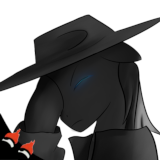ADPA 2-1: An Overview of Delivery · 11:08pm Feb 15th, 2014
This is the second post of my Abstract Design Principles in Art (ADPA) series, and it uses the Art as Communication/Transmission model (ACT) that I established in the first post. However, most of the discussion should be comprehensible even without having read that post beforehand.
This is the first post concerned specifically with the delivery aspect of an artistic work. There will be one such post for each major topic in delivery, for a total of 6 posts devoted to the topic of delivery/design. These posts will be labeled ADPA 2-1, 2-2, etc., for convenience. Since this topic is less abstract than most of the others covered in this series, these posts will be using more examples, most of which will be drawn from literature. While the concepts being discussed are still generally applicable across mediums, some mediums may strongly emphasize certain aspects over others, making the model less immediately useful for analysis.
It should be noted that this is a discussion of design aspects for artistic delivery in the abstract; it is therefore not meant to be a design process, which would differ much more from one medium to the next. Likewise, while this model is useful for analyzing a piece of art, it may not be as useful for constructing one. Every artist will have their own ideas on approach.
The primary topics of discussion for delivery in art are genre, style, elements, design approach, and cohesion. A brief summary of each is given below; these summaries are not meant to be very rigorous or formal, as the full explanation is left to future posts.
~~~
~~~
Genre
The genre of a piece is its shared cultural framework. In short, it is how a work relates to prior pieces of art, or a public's understanding of that type of art in general. Over time, art tends to be grouped into genres, or types, which share common properties. Conforming to such a framework can make a work more readily comprehensible to its audience, but could introduce problems where such conformity conflicts with the concept of a piece.
Style
A piece's style describes how it uses the shared communication framework the art form is based on to convey ideas to the audience. More precisely, style covers any decision where an artist could use their medium in multiple ways to convey the same basic idea; the style, then, is simply the artist's choice of method. Because style as a concept is based on the existence of multiple valid choices for delivery, it may be difficult to apply as a model to certain art forms. Even in mediums where it is readily applicable, it tends to mean vastly different things (Consider narrative style choices vs. cartoon styles). Most art forms can differentiate style as the 'feel' or 'tone' of the delivery itself.
Elements
Simply put, the elements of a piece are its components. Obviously, what this covers is very medium specific; in literature, it can be the events, characters, dialogue, setting, etc., whereas in a bust sculpture it may refer to all of the individual facial features of the subject. Deciding on the elements of a story is a major aspect of the design process, and can directly impact the rest of the design aspects discussed here. In some cases, a given element may directly translate to a major part of the conceptual groundwork for a story (an event in a plot-driven story, a character in a character-driven story, a given striking image in a painting, etc.,)
Design Approach
The priorities of an artist in designing their work changes how all of these aspects are put to use, and an inconsistent approach can at times be detrimental to a work's quality. The plot-driven and character-driven examples given in Elements also work as examples of design approach; a plot-driven literary work may bend style, genre, and other elements around events, whereas character-driven pieces would prioritize characters first. A painting may emphasize a subject (such as a person in a portrait), lighting, or any number of other things. In short, it describes how the artist prioritizes and applies design aspects to their piece.
Cohesion
The cohesion of a piece describes how the different aspects of it work together to convey the concept. Whereas design approach is concerned with figuring out each design aspect's role in the creation process, cohesion is concerned with how well the audience is being communicated with after the components come together. A short differentiation of the two would be, approach decides which aspects handle which parts of the communication, while cohesion ensures that in that process none of them conflict. An example in music would be approach deciding which instruments will be primary, which will provide harmony, etc., while cohesion ensures that none of the instruments are being overshadowed or drowned out in the final production.


